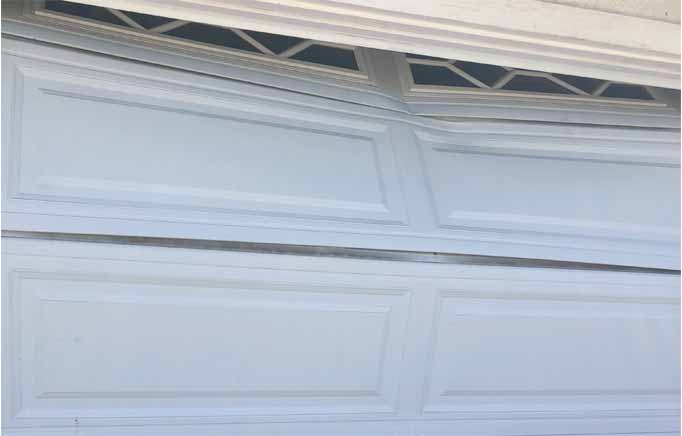Damage to one or more of your garage door sections can not only reduce the overall appearance and value of your garage and property but may also lead to issues such as section buckling, difficulty in closing the door, or even the door coming off its tracks. There are several common reasons for garage door section damage, including:
- Normal wear and tear.
- Attempted break-ins, which can harm one or more sections of your garage door.
- Accidentally running a car into the garage door.
- Damage caused by objects like bicycles, debris, or impacts from sports equipment (e.g., basketballs or footballs).
- Exposure to contaminants, weather conditions, including hailstorms, the corrosive effects of salty ocean air, and the harmful effects of ultraviolet radiation from the sun.
When damage such as dents, cracks, and rust begins to impact the normal and safe operation of your garage door, you have several options: repair the garage door, replace the sections, or replace the entire garage door. Here are the key factors to consider when deciding what to do.
1. The Magnitude of the Damage
Sometimes, the damage to your garage door sections may be purely cosmetic and might not affect the functionality of your garage door. In such cases, repainting the damaged door section is a reasonable solution.

However, if the damaged section is cracked or broken and impacts other parts of your garage door, particularly affecting its balance and ability to raise and lower, you’ll need to reinforce and repair it. In such situations, it could be more beneficial to consider replacing the section or even the entire door, rather than repainting and repairing it.
2. The Age of Your Garage Door
The actual age of your garage door is another factor to consider. If you have an older garage door, finding suitable replacement panels might be challenging. Garage door manufacturers periodically change machinery stamps, door section designs, and configurations, and often discontinue specific door models. If your garage door is no longer in production by the manufacturer, you’ll need to decide whether to repair or replace the entire door.

In some cases, you may be able to replace the panel, but if your garage door is custom-painted or made of wood, you’ll also need to paint or stain the newly installed section. This could result in the new section looking newer and not matching the rest of the garage door’s sections.
3. The Number of Damaged Sections
In many cases, if you have two or more garage door sections that need replacement, the cost of replacing them may be nearly equivalent to replacing the entire garage door. When you install a new garage door, the door’s components, including springs, tracks, bearings, and hinges, are also replaced. Therefore, this might be a wise financial decision depending on your needs and goals.
Maximizing Value When Repairing or Replacing Door Sections
Your final decision should be based on both the total project cost and your time preference, whether it’s for short-term or long-term planning. For instance, if your door section has both structural and cosmetic damage, you’ll need to invest in both repairs and a paint job. Alternatively, if you plan to stay at your property and use the garage door for more than five years, installing a new door may be a better choice than replacing just a section or two.
If you’re unsure whether to repair a garage door section, replace it, or choose a complete door replacement, consider consulting a licensed garage door repair company. They can inspect your garage door and advise you on the most cost-effective and beneficial option.







